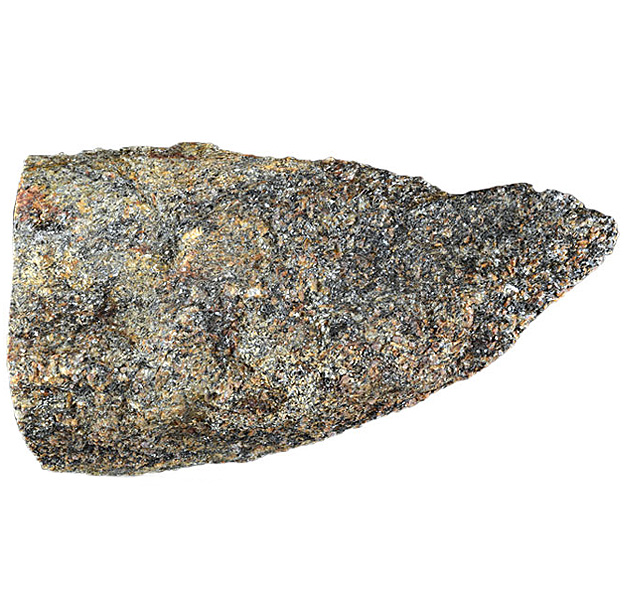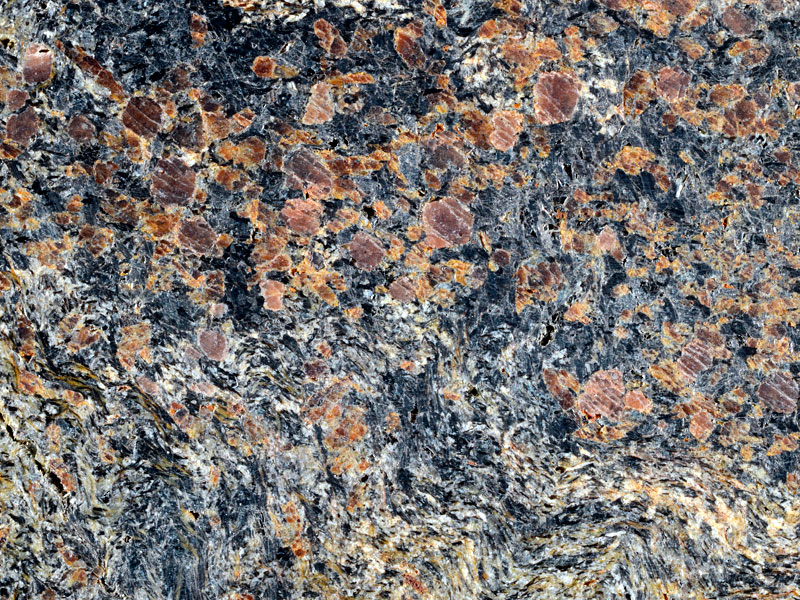
Fact sheet
This rock was deposited in the late Proterozoic period, probably as a mudstone, before being subject to regional metamorphism in the Grampian orogeny. It now forms part of the Dalradian succession in Scotland within the 'staurolite' Barrovian metamorphic zone (Barrow zones include chlorite-biotite-garnet-staurolite-kyanite-sillimanite). The rock was collected in Elf Hillock, Glen Clova, Scotland.
The thin section is distinguished by abundant garnet with inclusion trails, with characteristic high relief and isotropism when viewed in crossed polars. Staurolite has similar features but can be distinguished from garnet by its yellow colour and pleochroism, and its low order birefringence colours. The section also contains muscovite, biotite, feldspar and quartz, all of which appear relatively undeformed and unstrained indicating a lack of deformation after peak metamorphism.
The United Kingdom Virtual Microscope (UKVM) collection consists of igneous, sedimentary and metamorphic rocks from around the UK.
It is intended as a teaching resource, helping to tell the story of the common rock types and how they form, and reflecting the history of the UK at the margins of the continent of Europe. The collection is a series of teaching sets, for example igneous rocks from the North Atlantic Igneous Province and SW England; high-temperature metamorphic rocks from Scotland and low-temperature metamorphic rocks from Wales; and sedimentary rocks, including English limestones and sandstones.






